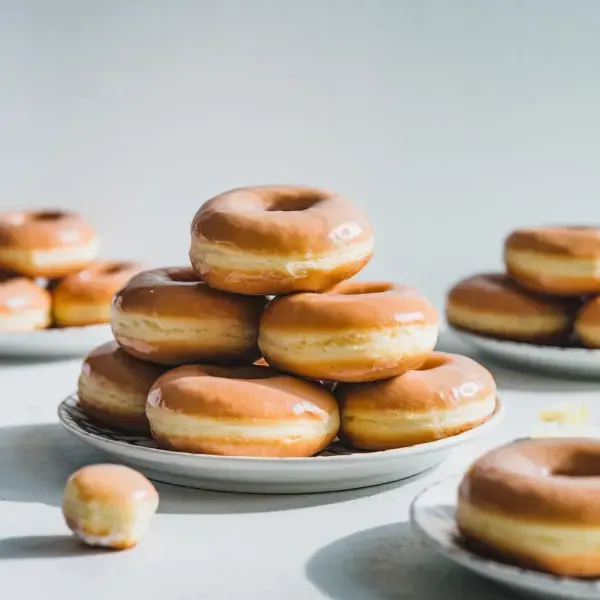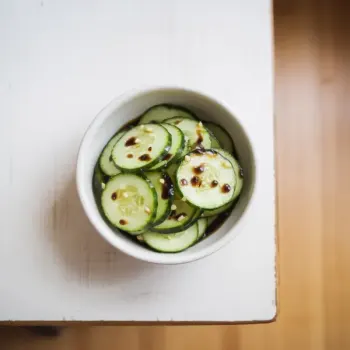
 180 minutes
180 minutesDelicious and fluffy homemade doughnuts, perfect for a sweet treat or breakfast indulgence.


Milk, warmed
cups
Active Dry Yeast
teaspoons
each
Unsalted Butter, melted and cooled
tablespoons
cups
teaspoons
All Purpose Flour, plus additional for dusting
cups
Neutral Oil, for frying
quarts
1. Activate the Yeast
Warm the milk to about 90°F. In a large bowl, whisk together warm milk and yeast. Let it stand until foamy, around 5 minutes.
2. Form the Dough
In the bowl with yeast mixture, use an electric mixer or stand mixer with a dough hook to blend in eggs, melted butter, sugar, and salt. Stir in half of the flour until just combined. Gradually add remaining flour until dough starts to pull away from bowl sides. If dough is sticky, add more flour, 2 tablespoons at a time.
3. Knead and First Rise
If using a mixer becomes difficult, move dough to a floured surface and knead until smooth. Grease a large bowl with oil, place dough inside, cover, and let it rise until doubled in size, about 1 hour.
4. Roll and Cut
On a generously floured surface, roll out dough to 1/2-inch thick. Using a doughnut cutter or two round cutters, cut out doughnuts and holes. Place cutouts on floured trays, re-knead scraps gently, and continue cutting.
5. Second Rise
Cover cut doughnuts with a towel and let rise until delicate, about 45 minutes. Preheat oven to 200°F then turn off if your kitchen is cool, placing trays inside with the door ajar.
6. Prep for Frying
Fifteen minutes before doughnuts finish rising, heat oil to 375°F in a heavy pot. Line cooling racks or plates with paper towels.
7. Fry Doughnuts
Gently place doughnuts in hot oil, a few at a time. Fry until underside is deep golden, about 45 seconds, then flip and fry the other side. Cook doughnut holes quicker. Transfer fried doughnuts to paper towels.
8. Glaze or Fill
Once slightly cooled, finish as desired with glaze or filling. Serve fresh for best taste.
Use a deep-frying thermometer to maintain the oil temperature around 375°F. If the oil is too hot, the outside will cook too quickly while leaving the inside doughy. If it's too cool, the doughnuts will absorb oil and become greasy.
Make sure your yeast is active before proceeding. If using active dry yeast, it should be dissolved in a little warm milk (about 110°F . 115°F) with a pinch of sugar and allowed to become frothy. This step ensures that your doughnuts will rise properly.
Don't overcrowd the pan; fry only a few doughnuts at a time to keep the oil temperature stable. Fry each side until golden brown, usually about a minute per side, but keep an eye on them as they can brown quickly.
Achieving the right dough consistency is crucial. It should be tacky but not overly sticky. If it's too wet, add flour a tablespoon at a time, but be cautious not to add too much, or your doughnuts will be dense.
When rolling out your dough, aim for about 1/2 inch thickness. This ensures that your doughnuts will puff up nicely without being too bready or too thin. Use a floured doughnut cutter for clean edges, which help in even rising and cooking.




Comments (0)